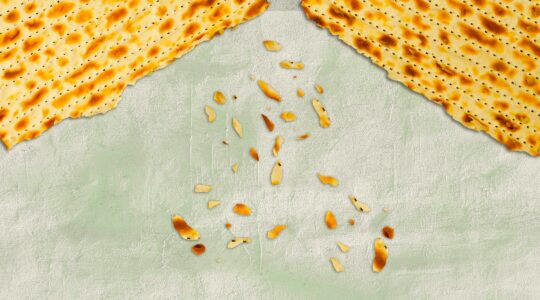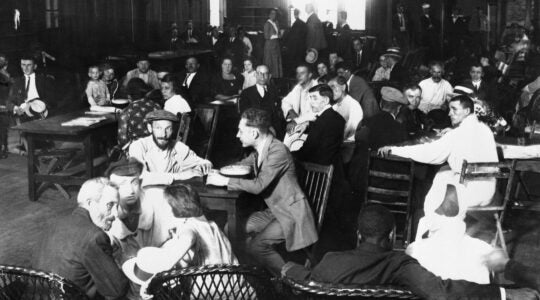NEW YORK (JTA) – Hundreds attended a large gathering last month in a stately social hall in Brooklyn. Among them were government officials, representatives of businesses and companies large and small, law enforcement brass and advertising executives. They were joined by Orthodox Jews of every stripe: men in hats and kipot, women in wigs and kerchiefs.
As a tasteful string trio played quietly, the guests dined on a buffet of sweetbreads, chicken, vegetarian fare and desserts. It was an interesting sight, Chasidic and other visibly Orthodox Jews mingling with guests from much different backgrounds – some with black smudges still visible on their foreheads from their religious services earlier that Ash Wednesday.
The unusual gathering was a tribute honoring the 10th anniversary of a Jewish newspaper that most American Jews have never heard of, even though it is an English-language periodical and the only Jewish daily in the country.
Hamodia was launched as a weekly in 1998 and became a daily at the end of 2003. Since then it has landed on the doorsteps and placed in special yellow newspaper boxes in front of thousands of Jewish homes every day but the Jewish Sabbath, holidays and Sunday. Its large, multi-sectioned weekly issue appears each Wednesday with a glossy magazine and special sections devoted to local, national and international news, as well as Jewish lore and law.
The impressive and diverse turnout at the anniversary celebration was testimony to many things, including the growth and sophistication of the Orthodox Jewish community, in particular its haredi subset, whose members look exclusively to papers like Hamodia – and the weekly Yated Neeman, as well as several smaller ones – for news, information and opinion.
A recent JTA article made much of Hamodia’s policy of not featuring women’s images. Indeed, although a woman, Ruth Lichtenstein, is the editor-in-chief of the paper, its staff includes many women and women write for the paper and are quoted in its pages, Hamodia does not feature photographs of women.
“Cringe or laugh” at that, the article cued its readers. But the condescension only revealed the gap between contemporary society, where women are routinely debased by the use of their images to sell products – including newspapers – and the traditional Jewish ideal of modesty.
Certainly it can be argued that drawing a stark line at any and all women’s photos rather than enter into an ongoing and arduous decision-making process about which depictions are in keeping with Jewish modesty values and which are not is draconian. However, a thoughtful reaction to the choice made by haredi papers would have been to contemplate that gap, not mock the papers.
Hamodia and other haredi periodicals are quite different in other ways, too. Since mimicking the larger world’s media would violate a number of Jewish religious ideals, one won’t find any reference in the haredi press to the celebrity obsessions that grace even the front pages of the general press, or any parallel to the sort of sleazy crime coverage favored by tabloids, or even any of the standard-issue scandal-mongering that saturates so much of the media. [photo 20080310shafran align=right max-width=200]
Basic international, national and local news are reported straightforwardly, with the sole intention of providing important or practical information. Extra attention is paid to Israeli news, of course, and the papers report on happenings in Orthodox Jewish communities across the United States, Canada, Europe, South America, South Africa and Australia.
Even the classified ads are different. Those in a randomly selected edition of Hamodia include the expected job offerings, services and properties for sale or rent, of course. But there is also a “lost” column and a sizable one labeled “found.” Therein, one advertiser seeks the owner of a gold bracelet; another the person who had lost a digital camera; another the feet missing a pair of children’s sneakers; another the holder of the partner of a single leather glove. Another bracelet and a blanket, both found “a few years ago,” are offered by other ads.
Then there are the scores of “gemachs,” the transliteration of a Hebrew acronym for the phrase “bestowal of kindness.” The word refers to a charitable effort that grants or lends goods, or provides services, to those in need free of charge.
Yes, Hamodia and company are different, perhaps even strange to some contemporary sensibilities. But the larger Jewish community could learn much from such newspapers – not only about haredim but about the Jewish religious tradition that lies at the roots of us all.
Like many among the array of guests at Hamodia’s 10th anniversary gathering, the community might even come to appreciate that being different can sometimes be quite an impressive achievement.
Rabbi Avi Shafran is the director of public affairs of Agudath Israel of America.






